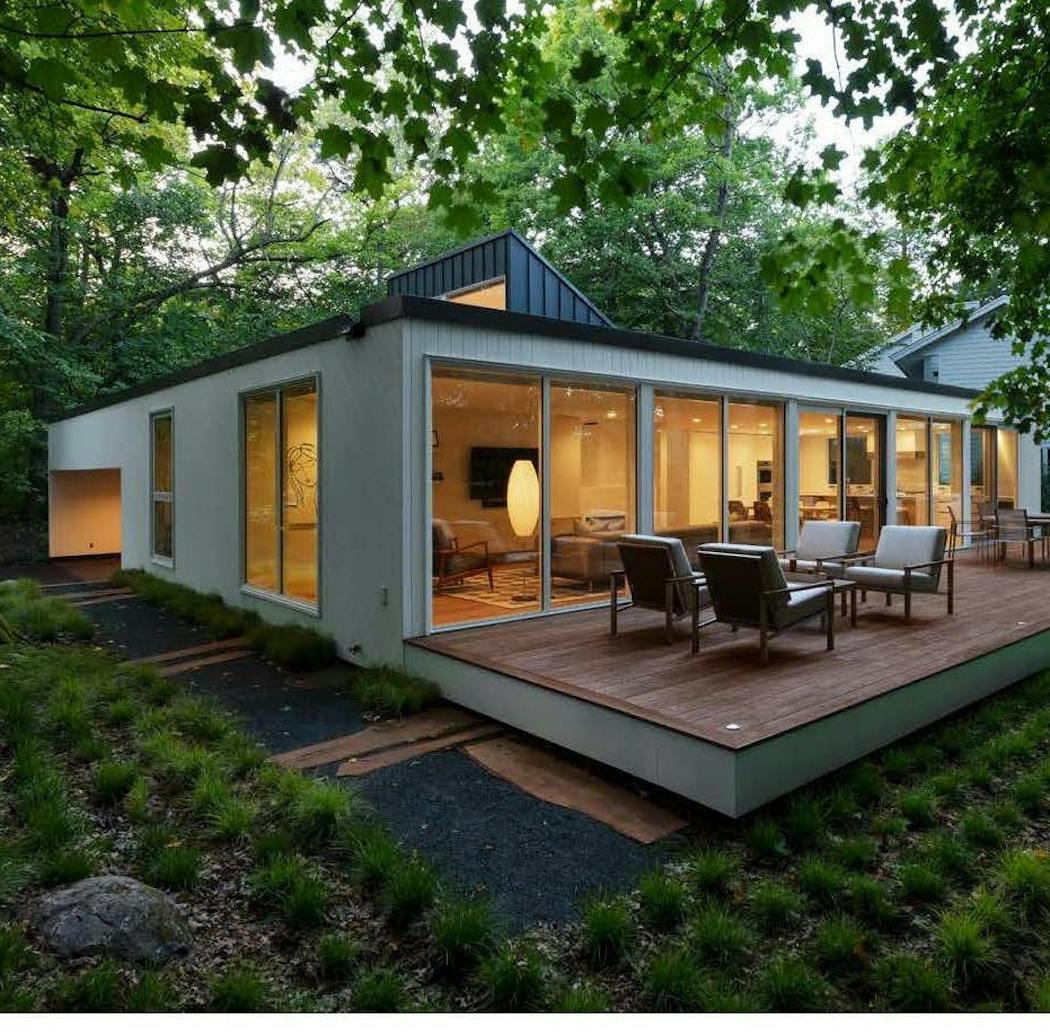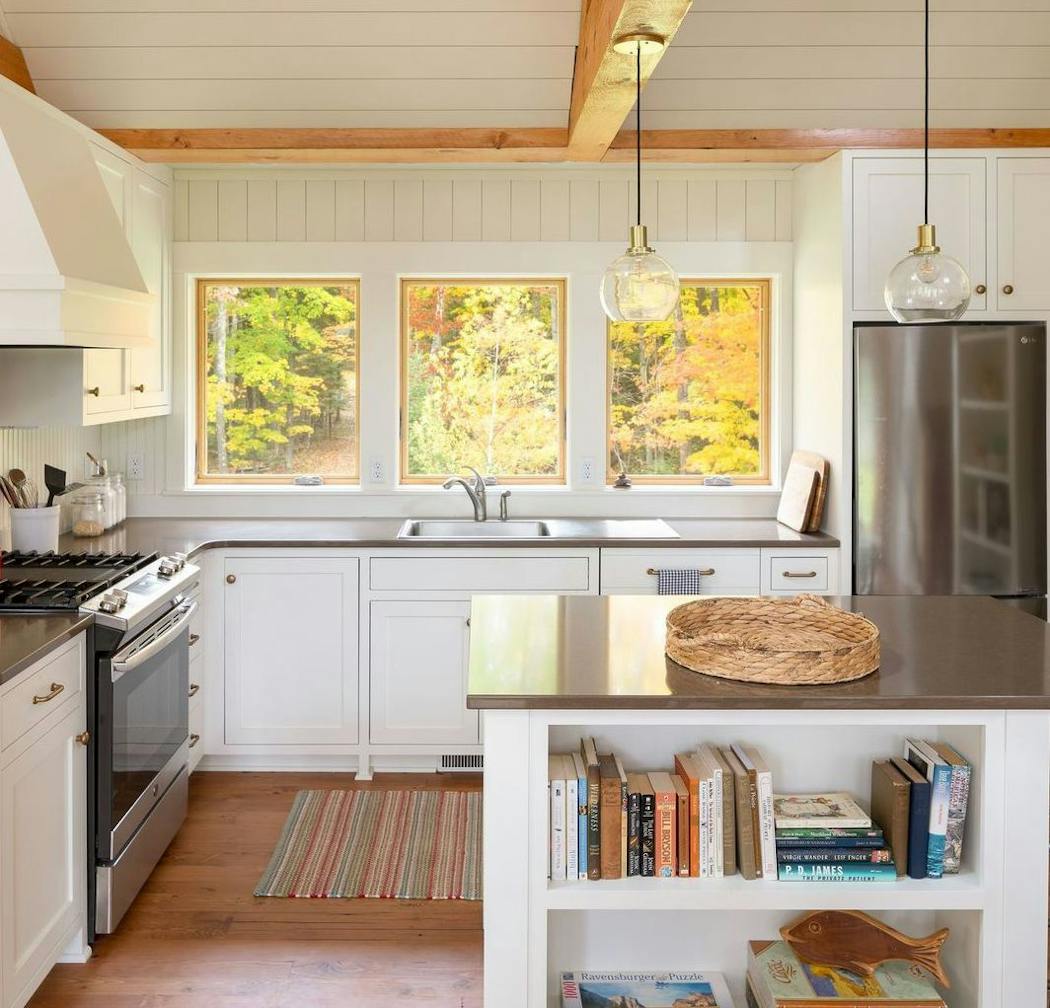If the past year has demonstrated anything, it's the importance of home.
What makes a home feel comfortable and comforting? What makes it function well, and which features lift the spirit?
The answers are as varied as the people who seek to create their ideal home. For one family, it's a getaway retreat where extended family can come together. For another, it's finding a way to bring light into a dark, older home.
These homes and more are among this year's Home of the Month selected projects. Twelve designs by AIA Minnesota (American Institute of Architects) professionals were chosen from 40 submissions.
Starting in June, we'll give you an inside look at these homes on the first weekend of every month. You'll hear from the homeowners and architects involved, and see plenty of photos to inspire your own building or remodeling plans.
1. Beard Avenue Urban
Design team: Christine Albertsson, Mark Tambornino, Emily Pressprich, Albertsson Hansen Architecture.
After raising three children, the owners of a 1950s Edina rambler were ready for the next phase of life. They replaced their older home with a new one — an updated version of the timeless center hall Colonial layout — in a home that could accommodate aging in place. Spaces are flooded with natural southern light, enhancing quality of life.
2. Rapson Revival
Design team: Charles R. Stinson, Chuck Thiss, Kim Streeter, Charles R. Stinson Architecture + Design.
A 1970s house designed by revered architect Ralph Rapson was remodeled within the original footprint to better accommodate modern living while respecting the spirit of Rapson's design. The original central glass atrium was preserved, but the kitchen was updated to make it more efficient, and interior spaces were reconfigured to create a gallery space and studio for the current owners, who are artists.
3. A Light Transformation
Design team: Ben Awes, Nate Dodge, Perri Kinsman, CityDeskStudio.
A home built in 1962 was embedded in a hillside, creating a sense of privacy and escape, with great spaces — but no light. A new glass entry and a glass sitting area brought much-needed light into the home. Additional windows and a dramatic 25-foot glass skylight through the center of the home completed the transformation, giving the home views of the woods in every direction.
4. Campfire
Design team: Meghan Kell, Dan Wallace, Kell Architects.
Campfire is a new country cottage nestled between trees on a Wisconsin lake. Designed as a family retreat, the cottage is separate from the garage, encouraging the family to pull in, leave their keys on the hook and forget about them until the long weekend is over. The exterior reflects the outdoor woods, while the interior is soft and bright, with a screened porch that invites relaxed lake living.
5. Tile House
Design team: Christian Dean, Jessica Harner, Nathan Van Wylen, Christian Dean Architecture.
The longtime owners of a 1955 Minneapolis rambler wanted to revitalize its look and help the small home live large, with the addition of a light-filled owners' suite. A new kitchen updated the interior, while the exterior, clad in terra-cotta shingles, gives the home texture and presence.
6. Everwood Farmstead
Design team: John Dwyer, Colin Oglesbay, Aaron McCauley-Aburto, Edward Eichten, D/O Architects.
At an arts center set on a historic farmstead in Wisconsin's Driftless Area, the caretakers requested a modest house set between the public parking area and the woods. The new home, which sits quietly within the landscape, takes cues from the historic buildings around it. Windows frame the old barn, the forest and fields like art. Wood sourced from the farm adds warmth to the clean, modern interior.
7. River Roost
Design team: Eric Odor, Ben Dose, SALA Architects.
The design for a new home perched on a bluff overlooking the Mississippi posed a challenge: One of the clients wanted traditional separate rooms, and the other wanted an open floor plan. A combination of three cedar "boxes" struck a balance, creating a linear home with lots of glass for expansive views. Recycled materials, green roofs and a solar-ready upper roof add sustainability.
8. Washburn Ave. Renovation
Design: Joy Martin, Joy Martin Architecture.
Renovation of a 1915 Craftsman in Minneapolis gave a family of four a fresh way to use their space without adding square footage. On the main level, a new dining nook, meditation room, mudroom and updated kitchen create better flow and function. The lower level now accommodates family movie nights, a home office, a bike collection and laundry. Upstairs gained an owners' suite, a redesigned kids' bath and refreshed kids' bedrooms.
9. GreenHouse
Design team: Christopher Strom, Elizabeth Akkerman, Eric Johnson, Christopher Strom Architects.
After fire destroyed the homeowners' garage, they took the opportunity to rebuild with an accessory dwelling unit on top of the new garage for aging parents to visit. They also wanted their ADU to be a model of sustainability, incorporating solar panels and other green features.
10. Casa Loon
Design: Marcelo Valdes, M. Valdes Architects.
An old, abandoned fishing cabin was destined for demolition. After repairing the cabin and enjoying it for six years, the family decided it was time for a year-round retreat that could hold more family and friends. Because the existing structure could not be expanded, a partial basement and a partial upper level provided a solution that more than doubled the square footage while maintaining a low profile as seen from the lake.
11. School House Box
Design team: Ben Awes, Chris Bach, Nate Dodge, CityDeskStudio.
A former brick schoolhouse believed to be the oldest building in Excelsior was transformed into a modern home for the owner with additional units above for rental and family. Working closely with the Excelsior Historic Preservation Commission, the architects designed a modern expansion off the back of the building that created space for a modern, light-filled home that honors the original building's character.
12. Metal-Lark
Design team: David O'Brien Wagner, Roderick Vahr, SALA Architects.
Set on 140 acres of rolling woodlands and prairie, a pared-down, rural retreat connects its inhabitants to the natural surroundings. The site was selected because it overlooks a small lake and for the shade provided by mature trees. A raw uncoated corrugated steel wall envelops one side of the building, while inside the home is open to the landscape. Sustainable features, including solar panels and passive solar orientation, were incorporated throughout.
Kim Palmer • 612-673-4784 • @stribkimpalmer

The 5 best things our food writers ate this week

A Minnesota field guide to snow shovels: Which one's best?

Summer Camp Guide: Find your best ones here

Lowertown St. Paul losing another restaurant as Dark Horse announces closing






